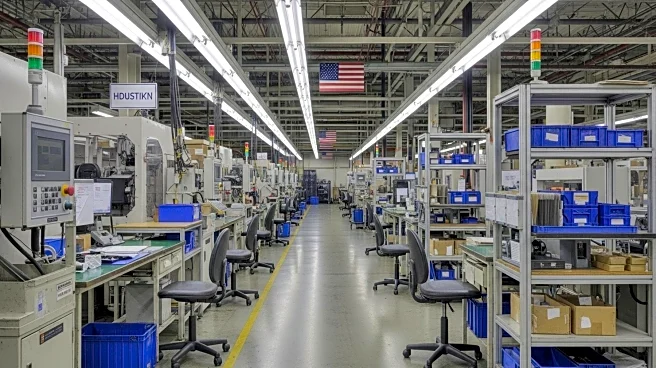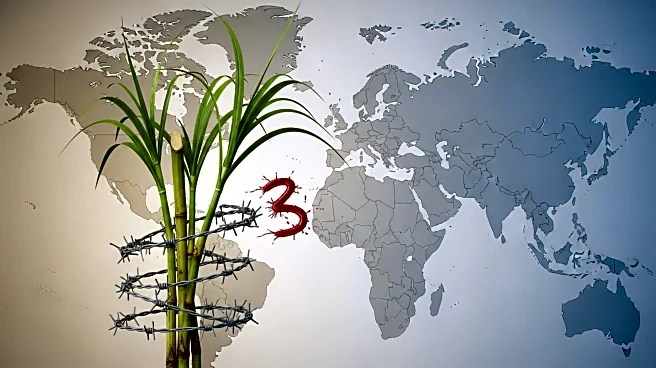What is the story about?
What's Happening?
Under President Trump's administration, the U.S. manufacturing sector has experienced a significant decline in jobs, with a reported loss of 42,000 jobs since April 2025. This downturn is attributed to the tariffs announced by President Trump on April 2, 2025, which were intended to protect domestic manufacturing. However, these tariffs have led to unintended consequences, such as increased costs for manufacturers relying on imported materials. The Bureau of Labor Statistics data and analyses from the Center for American Progress highlight the ongoing contraction in the manufacturing sector, exacerbated by these trade policies.
Why It's Important?
The decline in manufacturing jobs underlines the broader economic impact of President Trump's tariff policies. While intended to bolster American manufacturing, the tariffs have instead resulted in job losses and increased costs for U.S. consumers. The nonpartisan Tax Foundation estimates a potential net loss of 820,000 jobs due to these tariffs, with negative effects on the capital stock and GDP. This situation raises concerns about the long-term sustainability of such trade policies and their effectiveness in restoring American economic competitiveness. Stakeholders, including businesses and policymakers, are faced with the challenge of balancing protectionist measures with the need for economic growth and job creation.
What's Next?
The future of President Trump's tariff policies remains uncertain, with potential legal challenges and calls for congressional intervention. There is hope that the courts may overturn some of these tariffs, prompting a reevaluation of trade strategies. Meanwhile, political leaders and economic analysts are urging a return to free market principles and a reassessment of the impact of tariffs on the U.S. economy. The ongoing debate highlights the need for a comprehensive approach to trade that considers both domestic interests and global economic dynamics.
Beyond the Headlines
The tariff-induced decline in manufacturing jobs reflects deeper issues within the U.S. economy, such as the shift away from traditional manufacturing and the need for innovation and adaptation in a globalized market. The situation also underscores the complexities of implementing trade policies that align with broader economic goals. As the U.S. navigates these challenges, there is an opportunity to explore alternative strategies that support sustainable economic growth and competitiveness.
AI Generated Content
Do you find this article useful?













